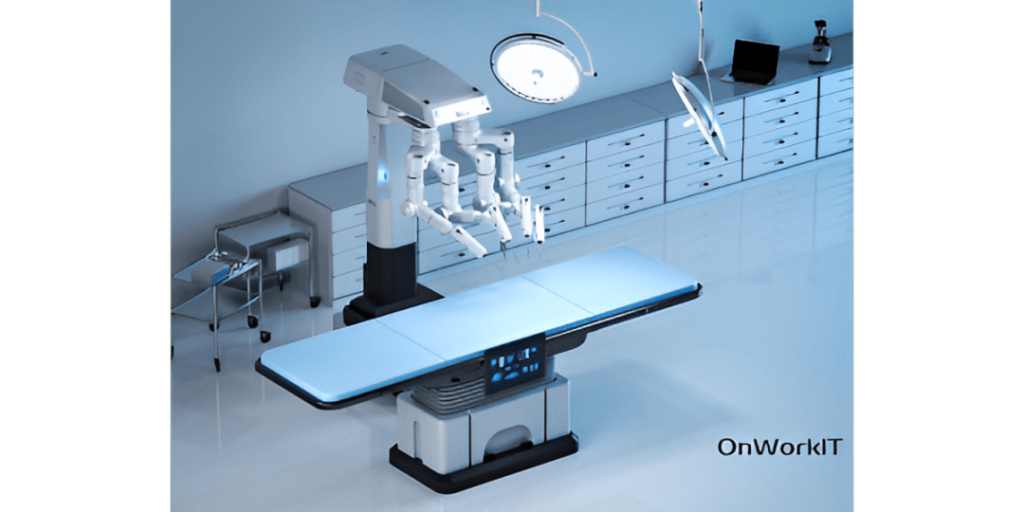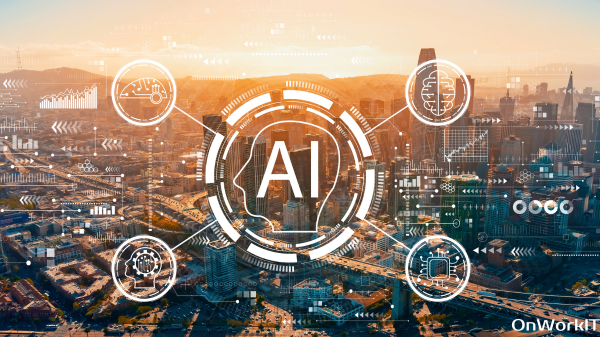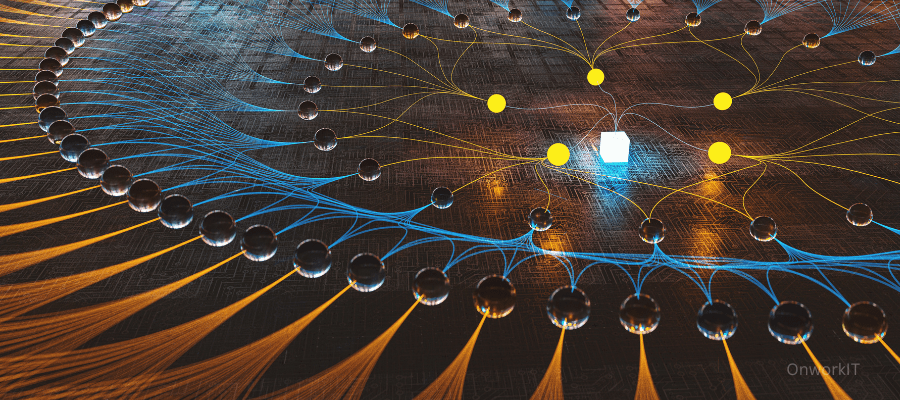Introduction: The AI Revolution in the PC Market
Rapid progress of AI Chip is changing the PC business and our contact with technology along with it. From more complicated machine learning and predictive analytics to improved efficiency and performance, AI-powered breakthroughs are changing computers in many different ways. This improvement is not a fleeting trend; it is sufficient to rethink personal computer capabilities.
Driven by each wanting a piece of the quickly growing AI PC chip market, prominent chip makers are following this technological change. Leading firms in this field include AMD, Intel, and NVIDIA, companies known for their creativity and technical ability. By creating new performance and capacity standards, their big AI projects are raising the business generally.
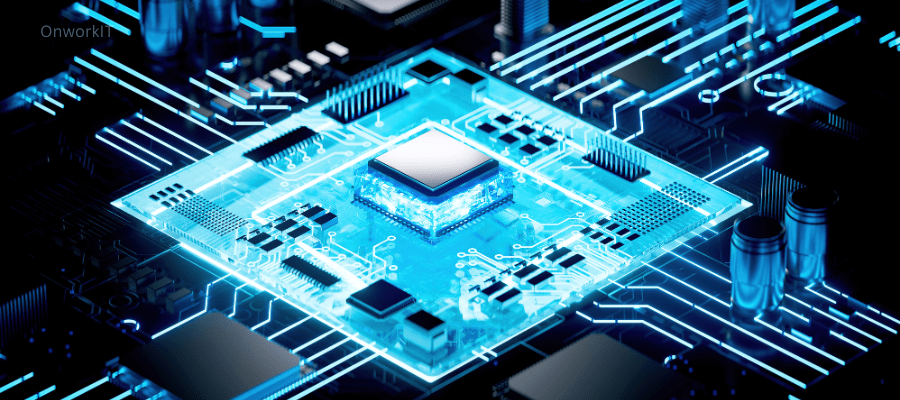
Using Computex 2024 as a stage, these significant business executives will show their most recent thoughts and important AI-related efforts. This famous technology meeting offers a look into the future of computers in addition to showing new gear. These firms provide a view into the next age of mobile computers, in which artificial intelligence is quietly integrated to improve user experience, optimize processes, and develop new possibilities as they show their AI-driven solutions.
It is hard to overestimate the importance of artificial intelligence for the PC business. Pushing the boundaries of what is practical, it is the drive driving the building of more clever, efficient, and adaptable computer systems. Emphasizing the importance of artificial intelligence in setting the course of technology, AMD, Intel, and NVIDIA have presented their most recent AI goals. The changes on display at Computex 2024 witness to an interesting moment of innovation and progress as well as the usefulness of artificial intelligence in the continued PC industry development.
AMD’s AI Chip Strategy: Innovation and Performance
When AMD revealed its newest artificial intelligence chips geared only for PCs at Computex 2024, it drew a lot of attention. Their talk mostly focused on the start of the Ryzen AI series, which is expected to dramatically upset the artificial intelligence situation in personal PCs. AMD’s unique Zen 4 design was applied in creating these new CPUs, which provides unmatched speed and economy.
Neural Processing Unit (NPU)
One very obvious development in the Ryzen AI series is bigger neural processing unit (NPU). Its artificial intelligence computer power has risen nearly thirty percent over its predecessors. Better core designs and next-generation laser mix allowed for faster and more efficient data processing, hence giving this performance boost. Since they offer much reduced delay and power usage than standards, Ryzen AI processors are a big foe in the AI PC chip business.
AMD’s AI Chip
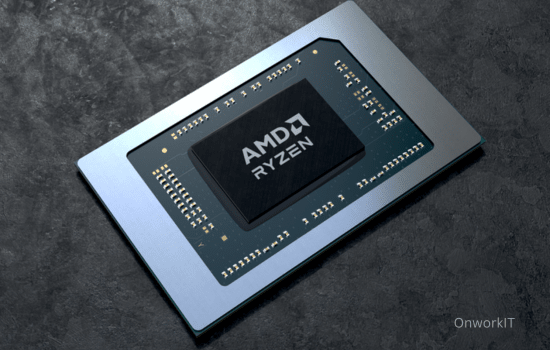
Strategic ties have also deeply affected AMD’s AI chip strategy. AMD revealed at the event agreements with various notable technological firms, including Google and Microsoft, to put its AI engines into a range of purposes. These links should promote a healthy environment that benefits developers and end users equally and encourage the development of AMD’s AI technologies across external computing and cloud computing among other fields.
By giving fresh frameworks and software tools meant to ease artificial intelligence apps on their technology, AMD has shown its committment to open-source development. The ROCm (Radeon Open Compute) platform, which lets developers change their AI solutions for AMD’s design, shows this commitment.
By putting its AI knowledge in these focused efforts, AMD seeks to build a competitive advantage in the business. While growing its product range by speed and innovation, AMD holds its lead in the fight for artificial intelligence PC CPUs. As the market for AI-powered apps grows, AMD’s all-encompassing approach is positioned to meet the wants of customers and businesses.
Intel’s AI Ambitions: A New Era of Computing
At Computex 2024 Intel revealed a number of artificial intelligence-oriented CPUs that will radically upset the computer market. The cornerstone of Intel’s AI plan is the introduction of their breakthrough CPU, Intel Xeon AI, which is meant to easily bring artificial intelligence functions into customer PCs. This next-generation computer will offer us a new age of clever computing with unmatched working power and energy economy.
Intel’s most recent model gives a large improvement in working power with a noticeable growth in chips per CPU, thus allowing faster calculation rates and more efficient data processing. Using state-of- the-art neural network processing units (NPUs) to speed machine learning processes, the design of these CPUs is especially designed to improve AI tasks. This idea ensures that external devices or data centers work more effectively and economically applying artificial intelligence.
Intel’s Key Selling Factor
Intel’s key selling factor is its focus on energy economy. Intel made these CPUs to improve speed while dropping power usage in reaction to greater worry about the environmental effect of data centers. Combining current power management systems that flexibly change power use based on tasks with unique production technologies helps to achieve this balance. For high-performance computer settings, users may expect less power usage; consequently, improved laptop battery life follows.
Google & Microsoft

To achieve its artificial intelligence goal, Intel has stressed the necessity of strategic partnerships in addition to hardware development. Notable relationships with notable software companies and IT organizations were revealed in order to improve apps to successfully leverage Intel’s AI engine. These deals include working with companies such as Google and Microsoft to allow simple contact with well-known artificial intelligence frameworks and operating systems, hence boosting the whole user experience.
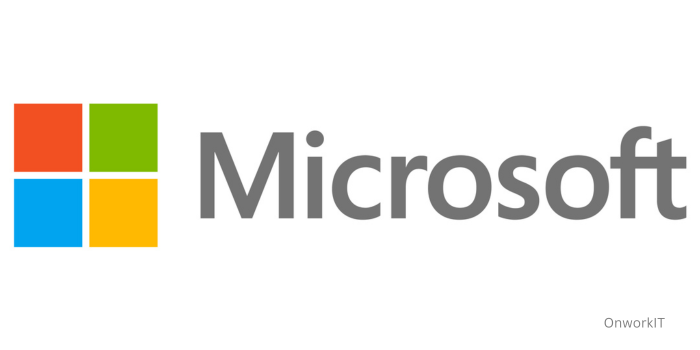
The bold artificial intelligence method of Intel marks a turning moment in computer history. By adding advanced artificial intelligence powers inside its CPUs, Intel is setting the road for more intelligent, effective, and powerful computer systems. These improvements might drive the next wave of artificial intelligence acceptance in a number of areas, including banking and healthcare, therefore improving Intel’s competitiveness in the market for AI PC chips when they become available.
NVIDIA’s Push for AI Dominance: Graphics to AI Powerhouse
While NVIDIA has long been known with innovative graphics technology, new developments in artificial intelligence (AI) have pushed the business to the top of the AI PC chip market. With a focus on graphics processing units (GPUs), NVIDIA has built a set of AI computers expected to radically upset the PC industry. Apart from growing game system capabilities, these artificial intelligence computers supply consistent solutions for many AI-driven projects and content production.
High-Quality Digital Material

Real-time ray tracing and AI-enhanced images made possible by NVIDIA’s amazing processing powers showcase one of the primary elements of their AI engines. This possibility is changing the game sector since it may offer engaging experiences and ultra-realistic pictures. These processors allow high-performance processing activities, thus they are also perfect for content makers who expect modern technology to create high-quality digital material.
Tensor Cores
Specialized components meant to speed deep learning operations—are also incorporated in NVIDIA’s AI engines. This places them well for use in areas such artificial intelligence research, machine learning, and data science. By building a uniform platform that meets graphics and AI requirements, NVIDIA is helping developers and experts to stretch the boundaries of what is doable in AI-driven apps.
Growth In Market Place
To grow its market share in artificial intelligence computers, NVIDIA is operating strategically with key activities. Leading technology companies are under active cooperation with them to put their artificial intelligence systems into a variety of things, including game platforms and expert PCs. To ensure that their technologies are entirely prepared for artificial intelligence uses, NVIDIA is also supporting software development. For instance, their CUDA system offers a whole range of tools and features meant to help the making of artificial intelligence apps.
Graphics Giant
In short, NVIDIA’s revolutionary AI chips and strategic partnerships highlight their change from a graphics giant to an artificial intelligence leader. By using its graphics knowledge and AI technologies investment, NVIDIA is positioned to control the AI PC chip market. Over a broad range of uses, they give unsurpassed effectiveness and flexibility.
Comparative Analysis: AMD vs. Intel vs. NVIDIA
With each having particular areas of expertise and skills, AMD, Intel, and NVIDIA all showed key AI developments at Computex 2024. Using performance measures, creativity, market positioning, and future effect, this study looks at and examines these top chipmakers.
Zen Design
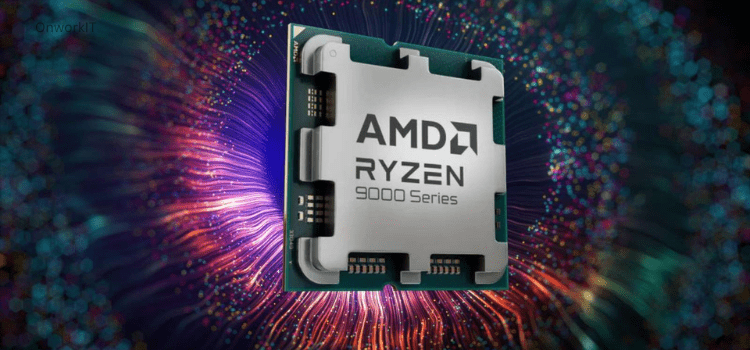
AMD has been improving the AI processing speed. Excellent scaling, better energy economy, and amazing working powers describe the most current AI CPUs of the company. Because AMD can quickly add artificial intelligence powers into its current CPU and GPU lines, it presents a viable option for different reasons. In terms of the software environment, AMD lags behind its competitors in terms of complete artificial intelligence tools and development assistance, however.
Intel, on the other hand, is focused on having a full strategy to make artificial intelligence CPUs. The launch of new Xeon processors with AI engines shows their drive to providing high-performance computing with AI capabilities. Intel’s method gives ecosystem development first priority and spends heavily on AI systems and software tools. Their oneAPI project and deep learning improve technologies are meant to allow the application of artificial intelligence on multiple platforms. Notwithstanding these benefits, AMD and NVIDIA’s quick technological growth has threatened Intel’s market leadership, so continued innovation is needed to maintain a competitive edge.
GPUs & AI-Specific TEchnology
NVIDIA leads the market in artificial intelligence computers. Their performance and creative leadership is underlined with the Computex 2024 reveal of new AI GPUs. Because of their great parallelizing powers, NVIDIA GPUs are perfect for artificial intelligence activities. Moreover, NVIDIA has built a strong software environment combining well-known artificial intelligence study tools like TensorRT and CUDA. Still, NVIDIA’s high cost and rely on GPU-centric solutions would make it less widely accepted in budget-conscious companies.
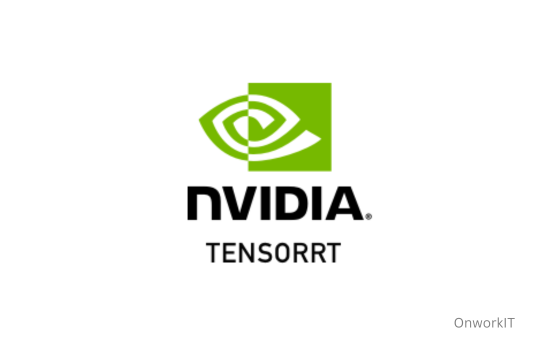
Every company pursuing artificial intelligence PC chips gets something unique. Challenges occur from NVIDIA’s software leadership and performance; from AMD’s efficiency and integration; from Intel’s huge environment. The person who can best build a mix of performance, creativity, and market freedom will most likely be the race’s winner.
Market Implications: The Future of AI PCs
As stated at Computex 2024 by important firms such AMD, Intel, and NVIDIA, the rapidly growing field of artificial intelligence systems has the ability to radically change the personal computer experience. As artificial intelligence gets increasingly integrated into machines, buyer behavior is expected to change significantly. AI PCs are surely going to create a need for more intelligent, sensitive, and efficient computer experiences. From necessary operations like reading and watching video to more specialized ones like games, creating content, and using business apps, better speed will assist users with a broad range of activities.
Integrated Gadgets
Software creation will be greatly affected by artificial intelligence-integrated gadgets. Developers will be pushed to build apps leveraging artificial intelligence methods to give better, more user-friendly interfaces. Advances in natural language processing, prediction systems, and real-time data analysis will all add to allowing greater tailoring and software freedom. The focus on artificial intelligence will also encourage programmers to give AI hardware optimization great attention, consequently giving more powerful and successful software solutions.
Driven by artificial intelligence personal computers, all businesses will look for new uses. Medical tools driven by artificial intelligence might help to develop tailored treatment routines and more accurate diagnoses. Adaptive learning systems driven by artificial intelligence in education might offer individual learning opportunities adapted to every student’s need. Along with tighter security steps, the financial business should make use of increasingly complicated data analysis technologies. Through advanced analytics and digitization of repetitive activities, AI-powered business intelligence will also aid the corporate sector by providing deeper insights.
More artificial intelligence (AI) and its application into personal gadgets are being engaged in by the market. As artificial intelligence systems are more widely applied, innovation should develop as organizations continuously try to offer the best user experience, speed, and efficiency. The huge competition means that artificial intelligence will likely advance fast and become a major aspect of future computers. AI-integrated mobile computing offers a bright and exciting future where intelligent systems will be the rule rather than the exception.
Challenges and Opportunities in AI PC Development
Leading CPU makers AMD, Intel, and NVIDIA face several scientific and financial hurdles in their goal of AI control, which may have a huge influence on their business aims. One important issue is the underlying difficulty of building novel artificial intelligence systems. These circuits need modern semiconductor manufacturing methods, which also entail considerable R&D spending in addition to existing production capabilities. The big cost of these technologies might be a sizable hurdle, especially in trying to keep cheap manufacturing while growing artificial intelligence capabilities.
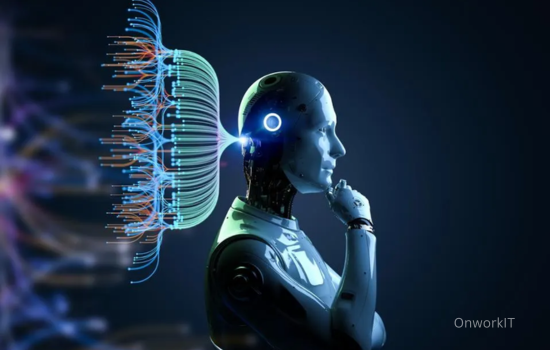
Expenses Chip
Cost worries extend beyond industry. AI-enabled PC chip creation needs for huge expenses in specialized hardware, software, and skilled people. Keeping competitive price while limiting these costs in a perpetually growing firm is tricky. The strong rivalry from new rivals in the AI chip field adds yet another barrier. As Google and Apple spend more on their own AI processing solutions, the rivalry situation is getting increasingly heated. This pushes AMD, Intel, and NVIDIA to be reliably creative and unique from the rivals.
One further thing to put under consideration is regulation limitations. Chip makers have to handle a complicated web of export bans, intellectual property rights, and international trade rules as the semiconductor supply chain is worldwide. Maintaining market access and avoiding legal issues relies on following these standards. Geopolitical problems might also delay the availability of important raw materials and components, thereby upsetting supply networks even more.
Notwithstanding these limits, the AI PC business gives numerous attractive chances for study and innovation. The growing demand for AI-powered applications across a variety of industries, including autos and healthcare, boosts advanced artificial intelligence processors’ wide market. Constant developments in artificial intelligence algorithms and machine learning models support innovation and demand more powerful and efficient technology. Moreover, teamwork with academic institutions and industry partners can lead to fresh breakthroughs in artificial intelligence technology and grow the network of goods driven by AI.
In summary, there are numerous opportunities for people who can properly handle this difficult environment even if there are many hurdles to AI control. Apart from establishing science leadership, the hunt for artificial intelligence PC computers has fostered new ideas in other fields.
Conclusion: The Road Ahead for AI in Computing
Intel’s key selling factor is its focus on energy economy. Intel made these CPUs to improve speed while dropping power usage in reaction to greater worry about the environmental effect of data centers. Combining current power management systems that flexibly change power use based on tasks with unique production technologies helps to achieve this balance. For high-performance computer settings, users may expect less power usage; consequently, improved laptop battery life follows.
AI Goals & Strategy
To achieve its artificial intelligence goal, Intel has stressed the necessity of strategic partnerships in addition to hardware development. Notable relationships with notable software companies and IT organizations were revealed in order to improve apps to successfully leverage Intel’s AI engine. These deals include working with companies such as Google and Microsoft to allow simple contact with well-known artificial intelligence frameworks and operating systems, hence boosting the whole user experience.
Bold Artificial Intelligence
The bold artificial intelligence method of Intel marks a turning moment in computer history. By adding advanced artificial intelligence powers inside its CPUs, Intel is setting the road for more intelligent, effective, and powerful computer systems. These improvements might drive the next wave of artificial intelligence acceptance in a number of areas, including banking and healthcare, therefore improving Intel’s competitiveness in the market for AI PC chips when they become available.
NVIDIA’s Push for AI Dominance: Graphics to AI Powerhouse
While NVIDIA has long been known with innovative graphics technology, new developments in artificial intelligence (AI) have pushed the business to the top of the AI PC chip market. With a focus on graphics processing units (GPUs), NVIDIA has built a set of AI computers expected to radically upset the PC industry. Apart from growing game system capabilities, these artificial intelligence computers supply consistent solutions for many AI-driven projects and content production.
Real-time ray tracing and AI-enhanced images made possible by NVIDIA’s amazing processing powers showcase one of the primary elements of their AI engines. This possibility is changing the game sector since it may offer engaging experiences and ultra-realistic pictures. These processors allow high-performance processing activities, thus they are also perfect for content makers who expect modern technology to create high-quality digital material.
Tensor cores—specialized components meant to speed deep learning operations—are also incorporated in NVIDIA’s AI engines. This places them well for use in areas such artificial intelligence research, machine learning, and data science. By building a uniform platform that meets graphics and AI requirements, NVIDIA is helping developers and experts to stretch the boundaries of what is doable in AI-driven apps.
To grow its market share in artificial intelligence computers, NVIDIA is operating strategically with key activities. Leading technology companies are under active cooperation with them to put their artificial intelligence systems into a variety of things, including game platforms and expert PCs. To ensure that their technologies are entirely prepared for artificial intelligence uses, NVIDIA is also supporting software development. For instance, their CUDA system offers a whole range of tools and features meant to help the making of artificial intelligence apps.
In short, NVIDIA’s revolutionary AI chips and strategic partnerships highlight their change from a graphics giant to an artificial intelligence leader. By using its graphics knowledge and AI technologies investment, NVIDIA is positioned to control the AI PC chip market. Over a broad range of uses, they give unsurpassed effectiveness and flexibility.
Comparative Analysis: AMD vs. Intel vs. NVIDIA
With each having particular areas of expertise and skills, AMD, Intel, and NVIDIA all showed key AI developments at Computex 2024. Using performance measures, creativity, market positioning, and future effect, this study looks at and examines these top chipmakers.
Using its Zen design, AMD has been improving the AI processing speed. Excellent scaling, better energy economy, and amazing working powers describe the most current AI CPUs of the company. Because AMD can quickly add artificial intelligence powers into its current CPU and GPU lines, it presents a viable option for different reasons. In terms of the software environment, AMD lags behind its competitors in terms of complete artificial intelligence tools and development assistance, however.
Intel, on the other hand, is focused on having a full strategy to make artificial intelligence CPUs. The launch of new Xeon processors with AI engines shows their drive to providing high-performance computing with AI capabilities. Intel’s method gives ecosystem development first priority and spends heavily on AI systems and software tools. Their oneAPI project and deep learning improve technologies are meant to allow the application of artificial intelligence on multiple platforms. Notwithstanding these benefits, AMD and NVIDIA’s quick technological growth has threatened Intel’s market leadership, so continued innovation is needed to maintain a competitive edge.
Thanks partly for its original work in GPUs and AI-specific technology, NVIDIA leads the market in artificial intelligence computers. Their performance and creative leadership is underlined with the Computex 2024 reveal of new AI GPUs. Because of their great parallelizing powers, NVIDIA GPUs are perfect for artificial intelligence activities. Moreover, NVIDIA has built a strong software environment combining well-known artificial intelligence study tools like TensorRT and CUDA. Still, NVIDIA’s high cost and rely on GPU-centric solutions would make it less widely accepted in budget-conscious companies.
Every company pursuing artificial intelligence PC chips gets something unique. Challenges occur from NVIDIA’s software leadership and performance; from AMD’s efficiency and integration; from Intel’s huge environment. The person who can best build a mix of performance, creativity, and market freedom will most likely be the race’s winner.
Market Implications: The Future of AI PCs
As stated at Computex 2024 by important firms such AMD, Intel, and NVIDIA, the rapidly growing field of artificial intelligence systems has the ability to radically change the personal computer experience. As artificial intelligence gets increasingly integrated into machines, buyer behavior is expected to change significantly. AI PCs are surely going to create a need for more intelligent, sensitive, and efficient computer experiences. From necessary operations like reading and watching video to more specialized ones like games, creating content, and using business apps, better speed will assist users with a broad range of activities.
Software creation will be greatly affected by artificial intelligence-integrated gadgets. Developers will be pushed to build apps leveraging artificial intelligence methods to give better, more user-friendly interfaces. Advances in natural language processing, prediction systems, and real-time data analysis will all add to allowing greater tailoring and software freedom. The focus on artificial intelligence will also encourage programmers to give AI hardware optimization great attention, consequently giving more powerful and successful software solutions.
Driven by artificial intelligence personal computers, all businesses will look for new uses. Medical tools driven by artificial intelligence might help to develop tailored treatment routines and more accurate diagnoses. Adaptive learning systems driven by artificial intelligence in education might offer individual learning opportunities adapted to every student’s need. Along with tighter security steps, the financial business should make use of increasingly complicated data analysis technologies. Through advanced analytics and digitization of repetitive activities, AI-powered business intelligence will also aid the corporate sector by providing deeper insights.
More artificial intelligence (AI) and its application into personal gadgets are being engaged in by the market. As artificial intelligence systems are more widely applied, innovation should develop as organizations continuously try to offer the best user experience, speed, and efficiency. The huge competition means that artificial intelligence will likely advance fast and become a major aspect of future computers. AI-integrated mobile computing offers a bright and exciting future where intelligent systems will be the rule rather than the exception.
Challenges and Opportunities in AI PC Development
Leading CPU makers AMD, Intel, and NVIDIA face several scientific and financial hurdles in their goal of AI control, which may have a huge influence on their business aims. One important issue is the underlying difficulty of building novel artificial intelligence systems. These circuits need modern semiconductor manufacturing methods, which also entail considerable R&D spending in addition to existing production capabilities. The big cost of these technologies might be a sizable hurdle, especially in trying to keep cheap manufacturing while growing artificial intelligence capabilities.
Cost worries extend beyond industry. AI-enabled PC chip creation needs for huge expenses in specialized hardware, software, and skilled people. Keeping competitive price while limiting these costs in a perpetually growing firm is tricky. The strong rivalry from new rivals in the AI chip field adds yet another barrier. As Google and Apple spend more on their own AI processing solutions, the rivalry situation is getting increasingly heated. This pushes AMD, Intel, and NVIDIA to be reliably creative and unique from the rivals.
One further thing to put under consideration is regulation limitations. Chip makers have to handle a complicated web of export bans, intellectual property rights, and international trade rules as the semiconductor supply chain is worldwide. Maintaining market access and avoiding legal issues relies on following these standards. Geopolitical problems might also delay the availability of important raw materials and components, thereby upsetting supply networks even more.
Notwithstanding these limits, the AI PC business gives numerous attractive chances for study and innovation. The growing demand for AI-powered applications across a variety of industries, including autos and healthcare, boosts advanced artificial intelligence processors’ wide market. Constant developments in artificial intelligence algorithms and machine learning models support innovation and demand more powerful and efficient technology. Moreover, teamwork with academic institutions and industry partners can lead to fresh breakthroughs in artificial intelligence technology and grow the network of goods driven by AI.
In summary, there are numerous opportunities for people who can properly handle this difficult environment even if there are many hurdles to AI control. Apart from establishing science leadership, the hunt for artificial intelligence PC computers has fostered new ideas in other fields.
Conclusion: The Road Ahead for AI in Computing
This blog post has focused on how Computex 2024 has turned into a key turning point in the annals of artificial intelligence computing. Prominent chip makers like AMD, Intel, and NVIDIA have set big artificial intelligence goals, consequently bringing in a new age of industrial change. With a focus on improving collaboration, speed, and performance in normal computers, every firm has displayed its dedication to growing AI technology.
Emphasizing the promise for better working power and efficiency, AMD displayed its most recent successes in AI-driven CPUs. Intel, on the other hand, displayed its creative approach to artificial intelligence by putting next-generation capabilities into its new line of CPUs, thereby changing both consumer and business apps. By focusing its innovative GPU technology and AI frameworks—which are expected to drive huge growth in deep learning and machine learning applications— NVIDIA kept its leadership edge in the AI sector.
One cannot completely understand the effect of Computex 2024. It has not only given these IT behemoths a place to showcase their most recent innovations but also underscored the competitive drive pushing the AI PC industry forward. The event underlined that the business is at a changing point with exciting new ideas and quick gains merely waiting ahead.
Future use of artificial intelligence in computers should be driven by AMD, Intel, and NVIDIA continued growth. Ground-breaking technology coming from their ongoing R&D investment should change the possibilities of AI-powered tools. The animosity among these organization leaders is probably going to push better invention, subsequently helping firms as well as customers over time.
At finally, Computex 2024 marked the start of an artificial intelligence computer time. The high goals of notable chip makers point to a future in which artificial intelligence will become ever more crucial in defining the path of technology. Future options abound, and AMD, Intel, and NVIDIA will surely lead the way in bringing forth these new improvements.
